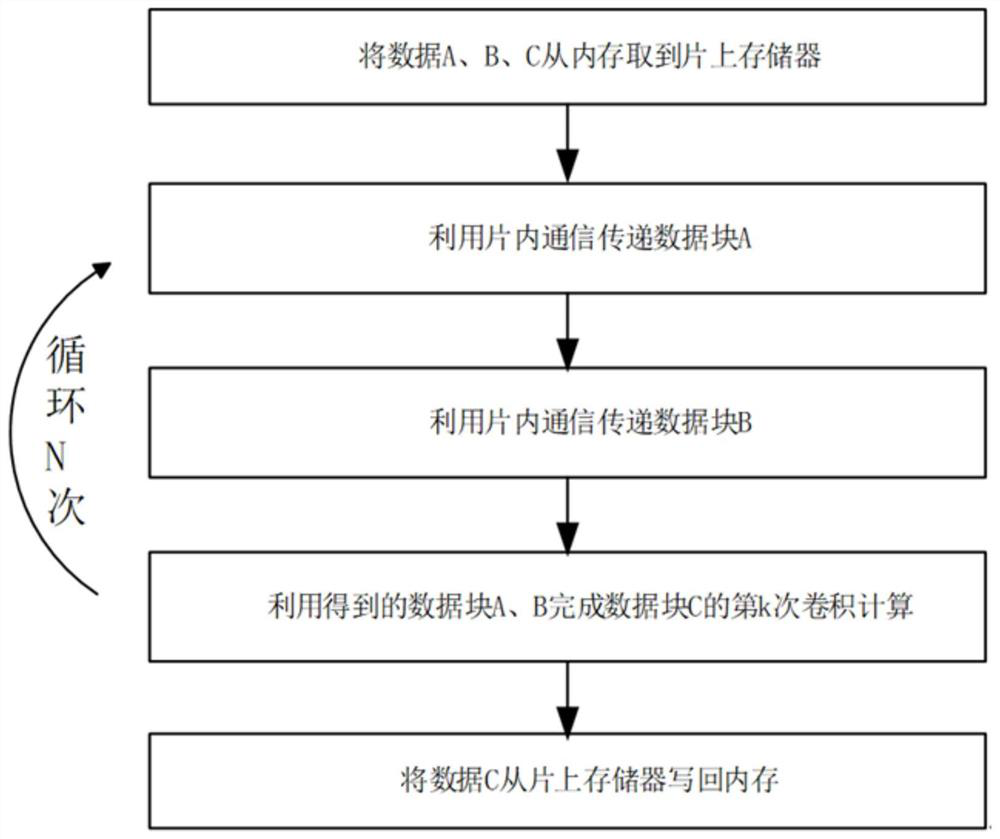Convolution calculation data reuse method based on heterogeneous many-core processor
A technology of many-core processors and convolution, applied in the field of deep learning, to achieve the effect of reducing memory access requirements, high performance, and improving data reuse rate
- Summary
- Abstract
- Description
- Claims
- Application Information
AI Technical Summary
Problems solved by technology
Method used
Image
Examples
Embodiment
[0015] Embodiment: A method for reusing data for convolution calculation based on heterogeneous many-core processors. Based on a large-scale heterogeneous system, the CPU completes the convolution calculation of data block C through data block A and data block B, including the following steps:
[0016] S1. According to the number of cores NUM of the heterogeneous many-core processor, two-dimensionally map the cores of the heterogeneous many-core processor into N*N cores, where the value of N is the largest integer that does not exceed the square root of NUM, and N *N cores are numbered, and data block A, data block B, and data block C are each divided into N*N blocks in two-dimensional equal parts. The (i, j)th core divides data block A, data block B, and data The (j, i) block data of block C are respectively read from the memory into their own on-chip memory, and the convolution calculation of data block C (i, j) requires data block A (i, k) and data block B (k , j), where k=...
PUM
 Login to View More
Login to View More Abstract
Description
Claims
Application Information
 Login to View More
Login to View More - R&D
- Intellectual Property
- Life Sciences
- Materials
- Tech Scout
- Unparalleled Data Quality
- Higher Quality Content
- 60% Fewer Hallucinations
Browse by: Latest US Patents, China's latest patents, Technical Efficacy Thesaurus, Application Domain, Technology Topic, Popular Technical Reports.
© 2025 PatSnap. All rights reserved.Legal|Privacy policy|Modern Slavery Act Transparency Statement|Sitemap|About US| Contact US: help@patsnap.com

